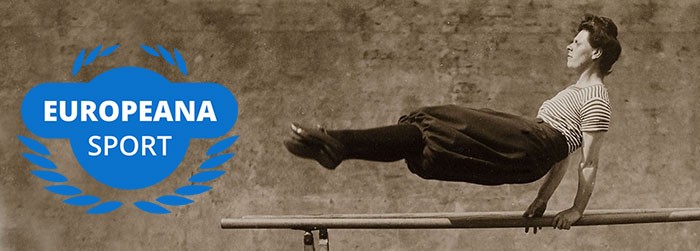History and 'glorious deeds' of a defunct Scottish football team
Third Lanark Athletic Club is the most famous defunct professional football club in Scotland. Today the club’s name has an almost mystical resonance for football fans of a certain age. Founding members of the Scottish Football League in 1890 and, for a time one of the most successful clubs in Scotland, the club was liquidated in 1967. The players still on its books were put up for transfer and its assets sold off.
When this booklet came out (it is undated but was probably published in 1938) Third Lanark’s glory days largely lay in the past, although the club was still very much a going concern. The red cover is the same colour as the Third Lanark strip and ironically has the legend 'A bright future'. Judging by the opening paragraphs of this short history even back then Third Lanark had a special aura about it.
“THIRD LANARK! What romance surrounds the name! What glorious deeds the men who have worn the honoured colours have achieved. The glamour which surrounds this beloved old Club of ours has grown as the years have passed, while that of others may have diminished.
From a humble beginning the Third Lanark Club carefully watched over by men of wisdom and who have been indefatigable in their labours – a labour of love let me add – has grown to be one of the most respected and powerful in Britain. Proud traditions do we have, traditions, let me say, which will be worthily upheld in the days which face us.”*
Hyperbole perhaps, but the Club had much to be proud of since its foundation in 1872 by soldiers of the Third Lanarkshire Rifle Volunteers. They won the Scottish League Championship in 1904 and reached the Scottish Cup final five times, winning it twice.
Perhaps the most enduring tale about the club concerns the Scottish cup final in 1889 when they played Celtic in Glasgow. Snow began to fall on the morning of the match and was ankle deep by the time it came to kick-off. The teams agreed in the circumstances that they would just play a friendly and rearrange the final. The referee Charles Campbell did not agree - the fans had come to see a cup final and a cup final they would get.
Third Lanark won 3-0 but Celtic complained to the Scottish Football Association and wanted a replay because of the extreme weather conditions. After discussions it was decided the game would be replayed, much to the disgust of Third Lanark’s fans and players. However, Third Lanark won the rematch 2-1 and belatedly lifted the Scottish Cup that year.
The book is a history of the club and by default the early days of Scottish football, but it also shows how we used to write about sport. Paragraphs are headed 'Glowing tributes', 'Our fame grows', 'Plucky draw', 'Gripping struggles' and 'A valued servant'. One of the later paragraphs - headed 'Fight for survival' - is a premonition of what lay ahead. Indeed, the club’s story after the publication of this book is one that haunts the boardrooms of many football clubs today – how to run a football club as a sustainable business.
Today, a club called Third Lanark plays in the Central Scottish Amateur Football League. In the recent past it was rumoured that they might apply to join the Scottish Football League to become a professional side. So perhaps Third Lanark A.C. might once again become a force in professional Scottish football; stranger things have happened.
Share your sport story
Can you help us to tell the story of sport in Europe in the past and the present?
We invite you to tell us about your sport experiences through objects like photographs, memorabilia, equipment or prizes.
Share your story →
This blog is part of the Europeana Sport project which showcases cultural treasures relating to sporting heritage in Europe.

